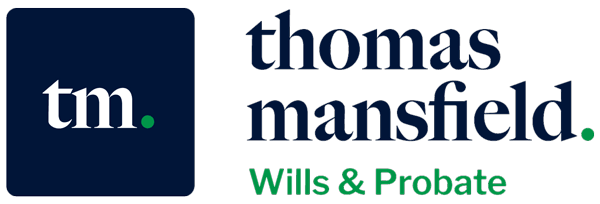Lifetime Settlement Deeds
This page sets out the requirements for trust documents. For an explanation of how trusts and settlements work, please refer to that section from the drop-down menu.
The Settlement Document
This is also called the ‘trust document’. The purpose of the deed is to cover all the legal formalities. We make sure that your intentions are fulfilled in a comprehensive and legally enforceable document.
What clauses are contained in a settlement?
The settlement will typically have the following included:
- Date
- The parties to the Agreement
- The “recitals”: words summarise the purpose of the Agreement
- Definitions: to ensure precision
- Beneficiaries (those with an interest in the property) properly identified
- Perpetuity period: with some types of trust, it is important to put a backstop time limit to avoid certain undesirable legal consequences
- Accumulation period: where capital can be accumulated rather than paid out each year
- Transfer to Trustees with direction to hold on Trust
- Trusts of beneficial interests: the terms of the Trust and the entitlements under it
- Trustee discretions: what the Trustee is allowed to do e.g. advancing capital to a beneficiary
- Administrative provisions (these set out how the trust is run, and what powers the trustees have in this respect)
- Who may appoint new Trustees
- Exclusion of settlor and spouse from any benefit.
What is a Recital?
The purpose of a recital is to explain the background to a settlement in terms of the reason it is made and intentions of the person settling the assets. It would also state whether or not the settlement can be revoked. In most cases, for tax reasons, settlements are set up so that they cannot be revoked. A piece of jargon you will often see at the beginning of a recital is the word “Whereas”.
Why is it common to set out legal definitions at the beginning of the document?
Although it will make a document look very formal, it will actually make it easier to read as certain important expressions are defined at the beginning. Otherwise, it will be necessary to explain the meaning each time you come to it to ensure a precise interpretation.
How does the settlement document identify the beneficiaries?
When we prepare the document for you, it is very important to be clear about who will benefit from it. Of course, this is often achieved by naming the beneficiaries but you may wish to say what happens if something arises such as the death of the person. A description can be used like “the children of my nephew, George”.
It may be that the children have not been born yet, but the intention is to benefit any of them who see the light of day at a later date. This can be useful for grandchildren or great-grandchildren who have not yet been born.
Sometimes descriptions will specifically include, or exclude, classes with a class, such as illegitimate children.
As you can imagine, the advent of human fertilisation using sperm donors has led to legal issues about parentage. The Human Fertilisation and Embryology Act 2008 states the husband of a woman will be treated as the child’s father unless he did not consent to the fertility treatment. The civil partner of a woman also has legal recognition as the child’s second parent unless she did not consent to the treatment.
Another point to take into account with the advent of civil partnership, is that the word “spouse” does not include a civil partner. This means that specific reference should be made to this. If this is potentially a consideration, we can adjust the definition.
The trust fund
Here we set out the detail of the property included in the trust usually in a Schedule to the Agreement. It is possible to add property to the trust. Care must be taken to ensure that proper legal formalities are carried out when property is transferred to the trust.
CALL US TODAY
Call us now on 0808 256 2917 for a confidential and no obligation initial discussion or email [email protected].
Perpetuity period
A legal requirement for a private trust is to have a limitation on its duration, known as the perpetuity period. This contrasts to the situation with a charitable trust, which may carry on indefinitely.
New rules introduced with effect from 6 April 2010 means that 125 years is the perpetuity period. This means that the property must vest within that time period. By vest, we mean that the person has actually become entitled to the benefit even if this may be delayed. There are two types of vesting: one is vesting “in possession”, and the other is vesting “in interest”.
A perpetuity period will need to be included in your settlement document if the gifts are conditional upon the beneficiaries reaching a certain age. It is also necessary where there is a discretionary settlement. For example, a discretionary settlement applies where trustees may pay out some of the funds in different amounts to different beneficiaries at different times according to their needs. The importance of a perpetuity period can come into play because if the property is not paid out by the end of the perpetuity period, it will go back to the settlor which can have adverse tax consequences. Sometimes there is a provisional allowance for money to go to charity in those cases.
Rules on accumulations
While the property is retained within the trust and not paid out to the beneficiary, it is referred to as being accumulated. Until 6 April 2010, there were special rules limiting excessive accumulations, such as for 21 years from the date of settlement. If you are seeking advice on a trust periods before 6 April 2010, we can advise on the contents. In some cases, an extension can be permitted if a child is a minor at the time of the end of the accumulation period.
Beneficial interests in a trust
We will make sure that the whole of the beneficial interest is covered in the document. This is to avoid the property reverting to the settlor, which can have negative consequences. We would include a wording for you as settlor something like paying the income of the trust fund to a particular individual during their life after which it goes to a second person absolutely. For example, if you wish to leave property to your wife during their lifetime, and afterwards to your child from an earlier marriage, this is how it would be dealt with. This is often dealt with in will trusts (see below). Where a trust is more complicated because of discretionary elements or interests that are conditional upon certain events (such as to your child and their spouse, their surviving spouse if they do not remarry), a more complicated wording will be needed.
Giving discretion to trustees
It is quite common to provide for a discretion in the event that the needs of beneficiaries may vary. It may be that one child is much wealthier than another and the discretion is exercised to help the one with greater need.
Appointing new trustees
We will typically provide for the appointment of a new trustee in an event such as a trustee dying or retiring. If you are the one settling property, you may wish to retain control over who the Trustee should be during your lifetime. A special clause can be added in to cover this.
Special rules relating to a trust of land
With a trust of land, there is a rule which requires consultation with the beneficiary when performing functions relating to land. To avoid this complication a special clause will need to be included in the trust document.
There is also a special rule concerning occupation of land by a beneficiary who may have a right of occupation in certain circumstances. Sometimes a clause is put in to avoid this.
The right of beneficiaries to require trustees to retire
There is a right for the beneficiaries in certain circumstances to require a trustee to retire, and replace them with a trustee of their choice. If you wish, we can include a clause to prevent the beneficiaries removing the trustees.
Rules to stop the trust being used to avoid tax
Special rules have been put in place to stop people from putting property into trusts for potential tax benefits, but then later receiving a benefit themselves.
We will help you to avoid the risk of adverse tax consequences by ensuring that any trust does not revert to you. It can happen inadvertently if the trust is not set up in such a way that the benefit cannot revert to you. For example, if the trust is not exhaustive so that its provisions make sure that it cannot revert to you, there will be tax problems. In order to do this, we will put in a default clause to ensure that you do not become the beneficiary again.
In discretionary trusts, we will sometimes include a clause preventing the trustee from exercising their discretion in your favour if you are the settlor of the property: again this is to avoid unwanted tax consequences.
Stamp Duty/Stamp Duty Land Tax (SDLT)
This can arise in the event that shares or land are transferred into a settlement. It may be necessary to include a certificate to confirm that stamp duty is not required to be paid because no consideration is given.
Signing the trust instrument as a deed
There are important formalities about the way a trust is signed-off which means that both the person settling the property (the settlor) and the trustees, will have to sign in the presence of a witness.
Will Trusts
The provisions described here may also be used in trusts that are included in wills (will trusts). These take effect on death and can be useful for similar reasons that lifetime trusts are set up, and in addition they can be useful tax-saving devices. Will trusts are covered separately [here] (if links are to be used)
CALL US TODAY
Call us now on 0808 256 2917 for a confidential and no obligation initial discussion or email [email protected].











